
Not quite ready to put your skills to the test? Have another look at the main lesson~! It’s only a tap, click, or whatever-other-sort-of-selection-method-emerges-in-future away!
こんにちにゃあ~!Welcome to Kiki+Koko: Let’s NihonGO!! Online, your personal library of Japanese language and culture education, with new deliveries every Monday and Friday, with a special delivery from QUIZBO™ every Wednesday. We’re your carriers of knowledge parcels, Kiki and Koko. You won’t find any ‘Oops, we missed you’ notices around here. No matter the time, day or night, you can find our carefully curated lessons. However, what good are lessons if there’s no way to apply that knowledge? Sure, practising on your own is useful, but we want to be able to provide opportunities for you to test your skills and practise differentiating characters on a smaller scale. With characters like 「は」「ば」and「ぱ」, you’ll want to do your best to keep a keen eye out for the subtle differences. It’ll help you in future differentiating bigger little differences in kanji and will further etch into your mind the differences in order to avoid a mix-up when you’re reading all of the characters at once. So, it’s time to ask that age old question: 「Do you know ぱぴぷぺぽ?」Well, we have with us, today, our friend, QUIZBO™, who will help you be the judge of that!
We know that it may seem tricky to some beginners, but you’re capable of more than you think! If you can differentiate「C」and「G」along with 「b」「d」「p」and「q」, then you’ll know that with time, we’re certain you’ll be able to differentiate the 濁点, dakuten, and 半濁点, handakuten, versions of these characters with time, patience, and practice! Ironically, we can’t stress the importance of keeping your study time stress-free enough. Learning doesn’t happen overnightーWell, we guess when you sleep your brain consolidates memories, so technically it doesーbut, it doesn’t happen with just one exposure! It takes many times, it takes letting it settle in your brain and returning to it to sort of surprise your senses. It’s very important, when you think you’re comfortable, to go back and have a go again with the quizzes. If it’s extremely easy for you, then you’ll at least be able to celebrate the fact it’s permanently in your memory and mind, but it can serve as a way to make sure you actually aren’t shaky on the subject or concept. So, the point is that learning is a journey, and it’s important to celebrate your accomplishments; it’s important to not get too comfortable and slip into apathy, but it’s also important to keep things light along the way because learning is a life-long journey, and there’s always something new around every corner!
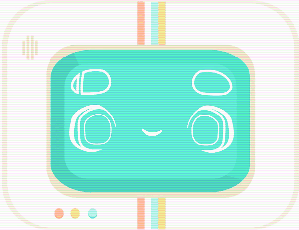
君ならできる☆You can do it!
We mentioned him in the intro, and now he’s here to help! We have our computer friend, QUIZBO™, here to read each of the hiragana aloud to you. Press the 「▶」button and listen to the pronunciation. Then, you can do your best to identify which character they said! If you’ve been here since the previous lesson, you’ll know that QUIZBO™ is always available to listen to in his mobile form as QUIZBO™ mini; so, no worries if you need to have him repeat something, he’s here to help!
Maybe you’re not quite sure about how each of these are read… But, that’s okay as well! If you’re not quite sure of the matching moji (文字, characters), you can still guess to study/revise. Or, if you want something a bit more concrete, be sure to visit the Kiki+Koko: Let’s NihonGO!! blog or online site where we have a whole lesson for you on how to read from あいうえお to– well, the current lesson! QUIZBO™ is there to help you read as well!
As for this quiz: the overall questions are in the same order each time, but the answers are randomised, so you can always return or refresh to study/revise!
So, without further ado:
Let’s NihonGO!! ぱぴぷぺぽ!!
[Questions with QUIZBO™]

#1.) Which hiragana do you hear? Hint: 【pa】
In romaji, 「ぱ」 is transliterated as「pa」which sounds sort of like the word「pa」without the diphthong or「pahh」
#2.) Which hiragana do you hear? Hint: 【po】
In romaji, 「ぽ」 is transliterated as 「po」which sounds sort of like「pohh」 just without the extra diphthong as usual.
#3.) Which hiragana do you hear? Hint: 【pi】
In romaji, 「ぴ」 is transliterated as 「pi」which sounds like the letter 「P」or 「pea」in more of an American accent.
#4.) Which hiragana do you hear? Hint: 【pu】
In romaji, 「ぷ」 is transliterated as 「pu」which sounds sort of like Winnie the「Pooh」, (and it sort of looks like him, too)
#5.) Which hiragana do you hear? Hint: 【pe】
In romaji, 「ぺ」 is transliterated as 「pe」which sounds sort of like the English word「pay」without the ‘y’ sound or diphthong at the end.
That’s all for now! Did you do well? Did you get many correct? Or, do you need a bit more practise? No worries! You can retake this as many times as you wish just by refreshing the page! It’ll clear all of your answers, and even randomise the options under each answer to give you a bit of a challenge. Each numbered question will be in the same order, but at least you won’t end up memorising the order of the options instead of the actual characters you’re meant to be differentiating. If you’ve only just been introduced to these characters and you’re not feeling quite so confident in them, that is completely understandable. Remember that it takes more than a few glances to memorise these, and more usage for it to become naturally read and recognised within less than a second’s notice in order to read fluidly and fluently. And, even whilst you’re learning these, you’re also oddly enough continuing to learn other skills like proper romanisation which will assist in future, even though you shouldn’t rely on it forever as a beginner. No matter what, though, no matter how long it takes, QUIZBO™ will always be here for you to revise, day or night, reading for you whether everyone is busy or you’re only able to study for a random moment of the day.
Again, don’t feel the need to rush yourself. If you’ve studied with us thus far, you’ve already learnt so much! It’s important to look forward and meet future goals, but it’s equally important to show yourself how far you’ve progressed. You can do that by going back and trying your hand at the previous quizzes. And, don’t forget, it’s still important to keep up with your handwriting and stroke order! Though we’ll be getting back to that quite shortly, you may want to try to write some vocabulary words in the meantime that use the previous stroke orders you’ve learnt. Though if you’ve learnt something thoroughly, it usually won’t leave you, it’s still important to keep these skills at the forefront of your mind and continue to keep them fresh!

Grooving to the content we’re creating? You can leave a TIP in the TIP♡JAR to keep it going!
(Can’t? No worries! The content is free for everyone! We’re just glad you’re here!! Bring friends if you like~!)
We want to continue to ensure you have the proper foundations and continue to climb as high as you dream when it comes to your steps to success in your Japanese language learning goals, whether you want to just learn a bit for fun or become fluent. We’re an independent resource that’s created just for you! Ads don’t keep the lights on, currently, they don’t even keep a fire going with such fluctuations and inconsistencies, especially at the beginning of the year, but you can ensure that these resources can continue to be created with love and care for not only yourself, but for everyone with access to the internet! And, maybe in future, even those without internet. We have so much we want to create and so much more we want to give, and you can support the creation of new and even better content by leaving a TIP in the TIP♡JAR to keep it going, or for long term contributions in increments, you can join our Patreon where our gracious host, Indigo East, usually posts behind-the-scenes, sneak-peeks, exclusive content, and more. And, we join in as well!
But, we understand, it’s a tough world out there, and there’s other options for everyone. If you’d like to support our survival, your survival in Japanese language, any other prospective learner under the Sun, as well as the creation of more content to be made available to as many people as possible, you can also share the content! You can easily share via Twitter and Pinterest where you can retweet and repin respectively without even having to type! Gestures like that go a long way, and we appreciate it. You can follow us here and Twitter, Instagram, Pinterest, Tumblr, and of course, YouTube, the links of which are found at the end of this segment as black and white icons. Thanks again for your time!
And, thank you for joining us! We hope that you continue with us on this adventure, and we appreciate that you’ve chosen us to assist you on your Japanese learning journey.
Stay Safe!
♡Kiki+Koko






Follow SpeRaToBo || ieindigoeast on WordPress.com
Categories: 読み方|Read!, Kiki+KoKo: Let's NihonGO!!, SpeRaToBo, 平仮名 [hiragana]







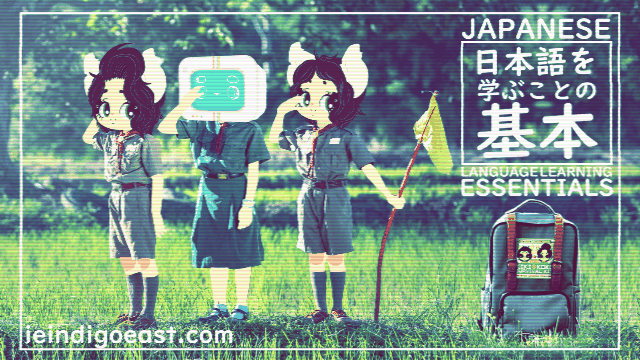







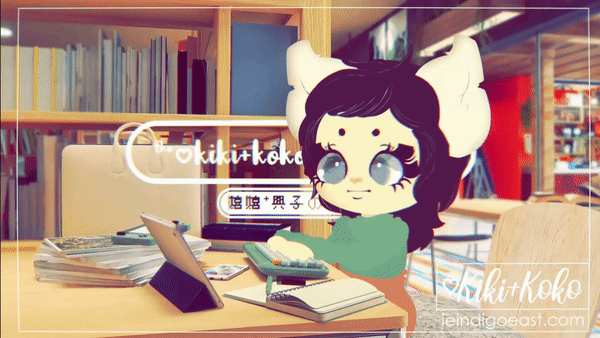





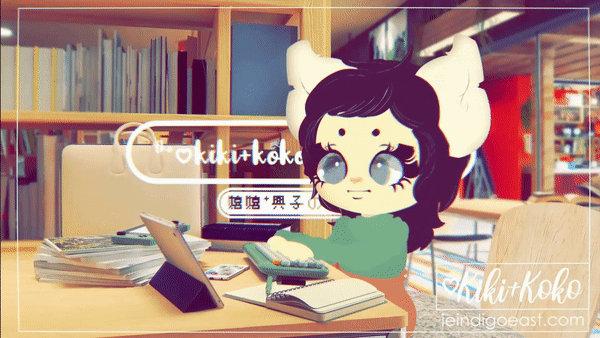
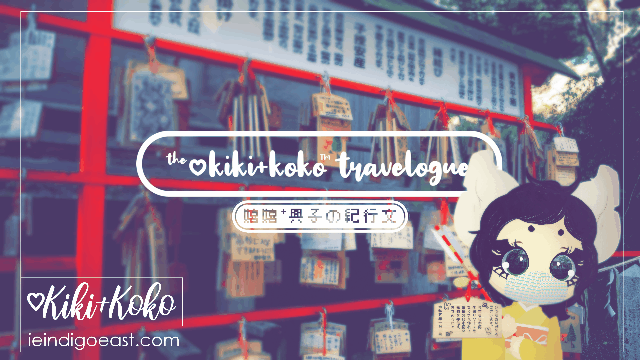







3 replies »